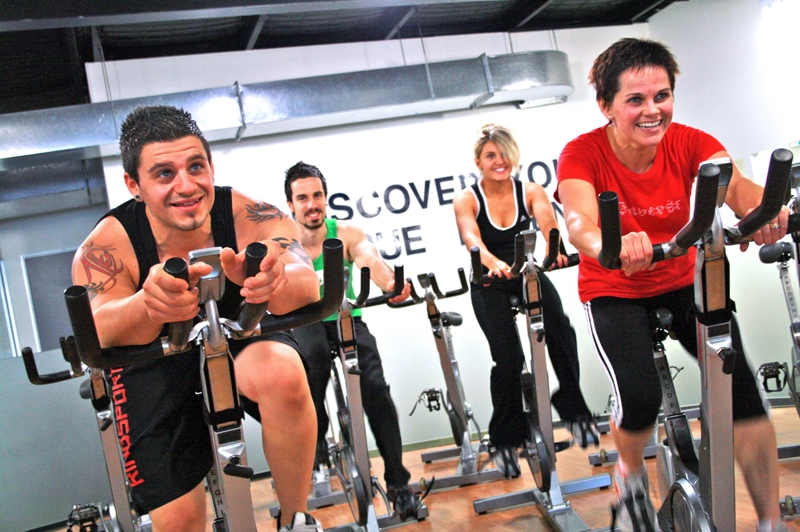Adeela Asghar | Contributor
Featured image: Gain some momentum—find yourself a bike! | Courtesy of localfitness.com.au
If you’re looking for a challenging and vigorous workout, you may want to consider spinning. Spinning, also known as indoor cycling, effectively burns calories and keeps your muscles in shape, especially during the off-season.
It’s considered a high-energy sport which will get your heart racing, legs aching, and your bike spinning to some vivacious music.
Most indoor spinning sessions last for around 30 to 75 minutes each. For instance, Tait McKenzie offers drop-in fitness classes on Mondays, Wednesdays, and Fridays, and are led by a certified spin instructor for an hour.
The intensity level varies throughout the class, due to different body positions (such as standing versus sitting), pedal speed, and resistance. Each position is designed to target a certain area of the body, honing in on a specific muscle.
The instructor will inform the class when to change the bike’s settings, so the ride feels similar to how it would outdoors—complete with hill climbs, sprints, and coasting.
In class, pedalling is also mixed in with upper-body workouts, resistance bands, or a themed adventure, which help tone muscles.
“Spinning allowed me to achieve my goal, as it is known to lead to reduction in unwanted body fat, allowing you to build muscles, especially in the legs and core body muscles,” says Zain Amjad, a second-year Biomedical student.
“It also allowed me to challenge myself constantly, helping me maintain my shape.”
While spin is gaining momentum in many areas, there are still many who do not know about the sport and the benefits associated with it. It can help activate the gluteus maximus, quadriceps, and strengthen core muscles; in fact, research shows that during spinning, these areas are used most, burning at least 600 to 800 calories an hour, as they are the largest muscles in the body. Spinning mostly targets the upper and lower muscles such as the hamstrings, quadriceps, gluteus maximus, and calf muscles, allowing for stability in the knee joints, thus making it easier to perform everyday movements, such as walking or running faster.
Spinning also improves fat mass, leading to a lower likelihood of developing cardiovascular diseases. “Moreover, it helps you lower your blood pressure and cholesterol,” adds a second-year Biology student, Kiran Shaikh.
“One thing I liked about spinning is that it’s low impact nature allows you to adjust resistance and moderate the pace and intensity of your ride, allowing you to enjoy the sport without being harsh on yourself. You do not have to start on high resistance from the very beginning; it could be very low resistance. Once you get comfortable, you can step up your ladder.”
Spinning is also an excellent way to improve the core strength. “One of the benefits I like about spinning is that it allows you to challenge yourself where you can find a number of ways to challenge your body above lactate threshold, which many sports do not allow you to achieve,” says Shahrukh Afzal, a fourth-year Social Work student.
Spinning can be performed as an anaerobic exercise, building up muscular endurance over an extended timeframe. However, there are also aerobic benefits. Spinning classes include both endurance and cardiovascular training.
A healthy heart and lungs is one of the primary benefits of spinning—as the body works harder, it will work to better control breathing as well. This can help with managing anxiety, and lowering heart rate when in a situation where physical exertion occurs.
Research shows that spinning leads to healthy weight loss, and improves physical health, which leads to both a healthy physical and mental state overall.


